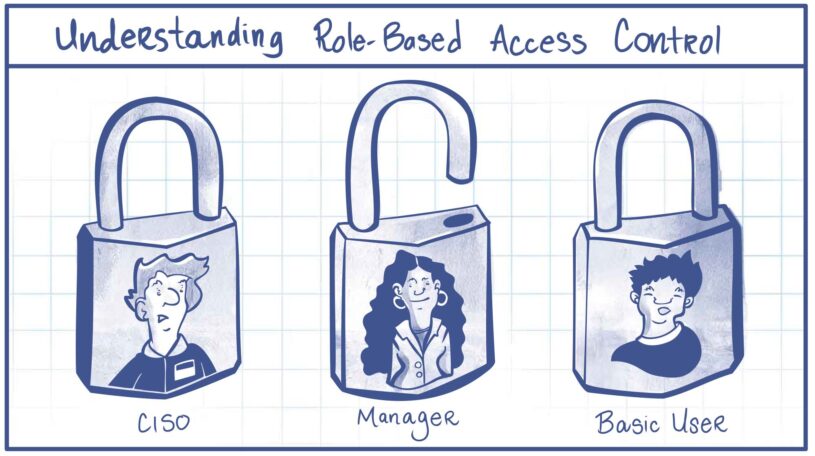Living in a highly digital world means being ready for possible cyber attacks and foreseeing security issues. The transition of large arrays of data to online reality increased cybercrime and bred criminals who try to get valuable information and use it illegally. Thus, nowadays security has entered a new level.
The Importance of Access Control
Modern businesses base their workloads on digital resources. Data centers, cloud storage, and online folders are used to store datum about companies and clients. Automated systems are used to process large volumes of information. Businesses keep all the strategic information on digital resources, making it a target for intruders and hackers.
By getting access to a company’s corporate information, scammers can sell it to competitors, use it for blackmail, or disturb the workflow. Any breach of personal data security results in significant losses for companies. These include reputational, time, and financial losses.
Both private and public sector enterprises are prone to hacker attacks, so businessmen can’t predict who will become a victim of cybercriminals. This is why the development and implementation of a reliable cybersecurity system is a vital step for any business. Companies should set this task as a priority and cope with it at the stage of business setup.
Access control comes as a crucial aspect of cybersecurity strategies. Constant monitoring prevents unauthorized attempts. Properly implemented control strategies help eliminate the possible negative impact of external factors on your vulnerable data.
Companies have a guarantee of reliable protection against data breaches and reduce the risk of theft. Moreover, modern developers offer advanced systems for real-time monitoring and enhanced methods for datum protection. Below, we’re going to concentrate on access control and its types. We explain the essence of the existing models and highlight their advantages.
The Core of Access Management

Before we get down to the classification of access control, let’s define what it is. To clarify the term, note that access control implies the creation of a highly secure online space for data storage. Only a limited circle of users can get the right to approach this space. They should provide proof of their right to use protected datum by entering certain key passes.
The access management process consists of three main components that help filter users, namely, identification, authorization, and authentication. By passing through these stages, only authorized users get to the final target. Based on these three components, security systems sort out unauthorized users and create a highly reliable algorithm for managing datum accessibility.
Corporate datum protection is a core principle of any organization since it directly affects its reputation, trustworthiness, customer loyalty, and trust. Keeping such information as trade secrets, business strategies, client database, consumer personal data, etc. highly secure prevent companies from multiple problems.
Note that cybersecurity is organized at different levels. Thus, different types of access control systems are implemented to guarantee reliable protection at all levels of interaction with users. Below, we’re going to have a deeper look at them.
4 Kinds of Data Access Control
Specialists distinguish between 4 main types of access control in cyber security. Each option is designed to cope with particular tasks.
Discretionary Access Control (DAC)
According to this method, network administrators set a list of authorized users. That is, they are responsible for limitations of data accessibility. In most cases, access rights are based on group membership or user identity. The concept faces some criticism since many specialists claim that it has low data centralization. The lack of centralized control impedes and slows down the workflow.
Role-based Access Control (RBAC)

As for this type, it comes as the most popular and widely used mechanism of data security. In this case, the system is set to unlock folders with information, depending on user profiles.
The mechanism implies the creation of user profiles based on their roles in companies. For instance, managers, heads of departments, temporary contractors, etc. Depending on the type of defined profile, each group of users has different permissions. The system owner is authorized to manage the system and set configurations if some profiles require an exception.
This type of management is typical for small and medium-sized enterprises due to their convenience of use, relative simplicity, compliance with the business policy, and hierarchy-based transparency.
If you want to learn more on this topic, you can find detailed information in the article “What is Role-Based Access Control”.
Mandatory Access Control (MAC)
According to this model, a central authority regulates access rights, based on several tiers of security. This algorithm is usually used by military or government organizations to achieve the highest level of datum security. Security kernel and system resources are used for narrow-limited classifications.
The main distinctive point of this model is that access rights are regulated not by resource owners but by the central authority.
Attribute-Based Access Control (ABAC)

This model features high detailing and uses attributes to assign access rights. These can be resource or user features, or environmental conditions. That is, users are allowed use resources based on the entered attribute. This solution allows for dynamic context-aware access management.
These 4 types of access control come as the main guards of digital security for modern businesses. Company owners can pick the most suitable solution to guarantee secure information storage and convenient access to information for authorized employees.
Challenges of Access Management
However, while the existing models are extremely reliable and high-quality, their implementation encounters certain challenges. Here are the main ones:
- Scalability and complexity: It’s not easy to implement and manage access control systems. Moreover, if the company is big. When dealing with large-scale organizations, the process may stretch to several months until system administrators create a centralized system that unites different departments and provides limited opportunities for using datum to employees. Software development also takes time. Thus, setting up a control system is a real challenge.
- Usability and security: The development of a proper security system requires meeting particular requirements. Guarantying robust security without impeding user productivity is the main one.
- Policy management: System running is all about continuous improvements made to the algorithm since each company develops and evolves, changing its policies and requirements. Thus, security landscapes require adapting, which is why the process of updating access management algorithms does not stop.
- Risk management: The implementation of such systems implies finding the balance between maintaining proper access rights and minimizing mismanagement. When developing software, specialists consider threats and build tools to resist them effectively.
- User training and adoption: Such control systems are usually complicated for understanding. Thus, it’s one task to integrate it into the workflow, while another, no less significant, is to train the staff to use and manage it. It’s necessary to train employees to facilitate system perception and use.
Modern security is far more than just entering a password. Nowadays, advanced systems are used to protect data from theft and guarantee high business security. In most cases, access to data is strictly limited to multi-level protection algorithms. Different types of security models are used to secure corporate and business information.
Data is the most valuable asset in the modern business environment. It comes as a strategic tool that can be used to develop or ruin businesses. Thus, it’s subject to increased protection. Now, you know the core of the access control models in cyber security. These measures help improve company security and guarantee its reliable interaction with a target audience. Secure data with access management is a key to the creation of high reputation and trustworthiness in the business arena.
